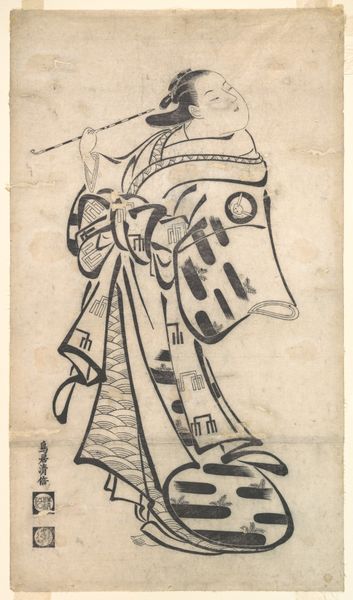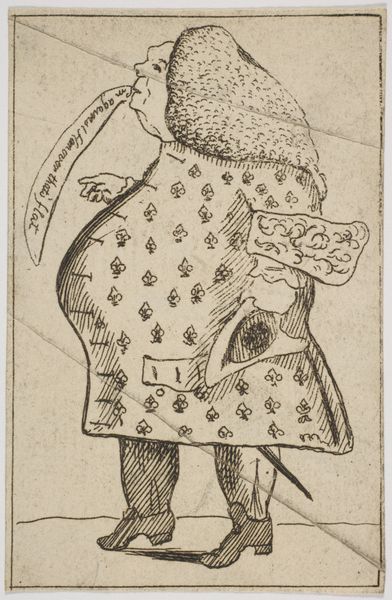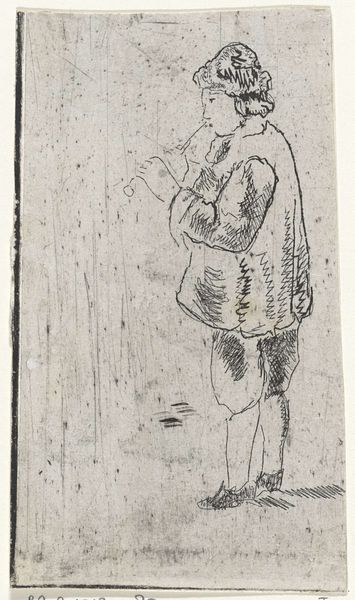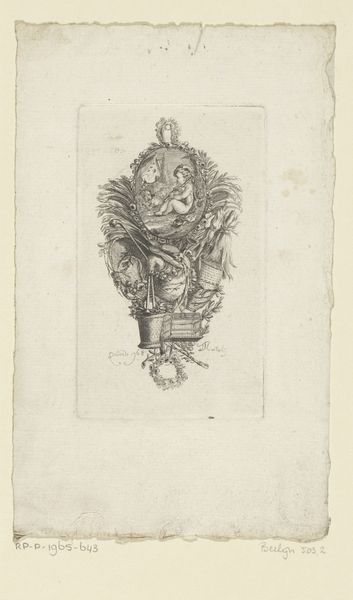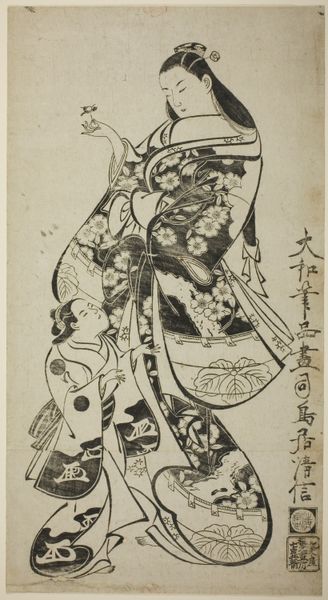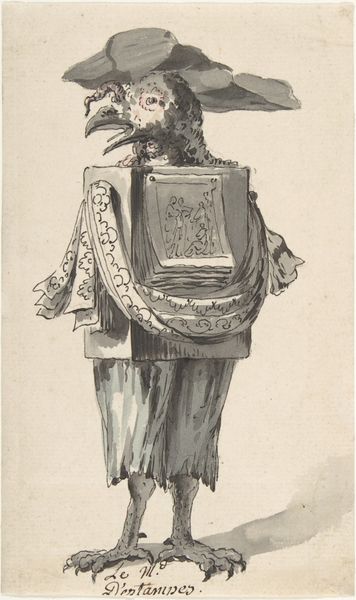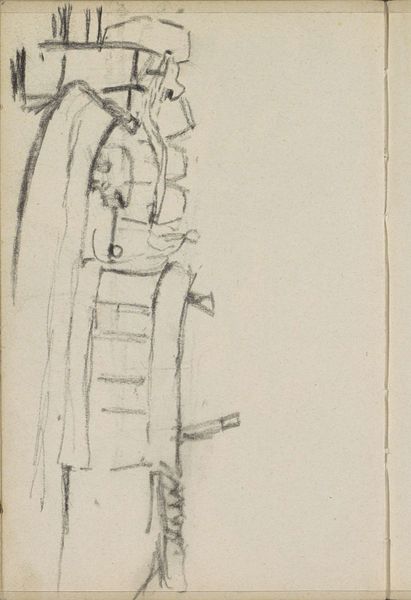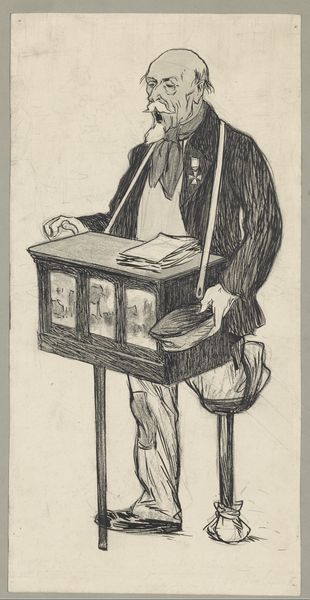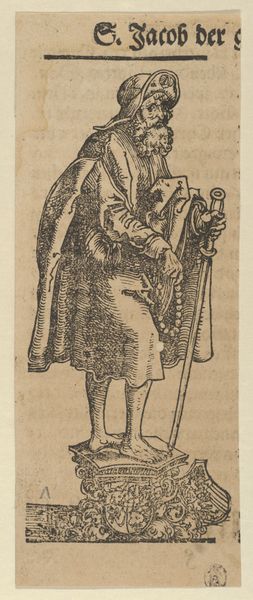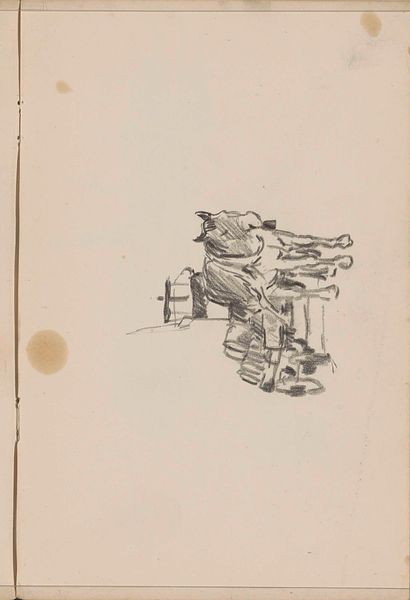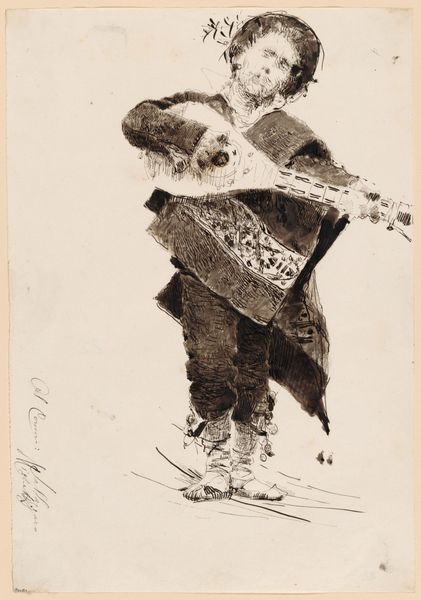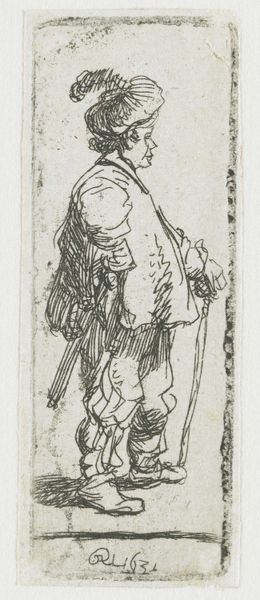
drawing, ink
#
drawing
#
imaginative character sketch
#
toned paper
#
quirky sketch
#
cartoon sketch
#
figuration
#
personal sketchbook
#
ink
#
ink drawing experimentation
#
pen-ink sketch
#
symbolism
#
sketchbook drawing
#
watercolour illustration
#
sketchbook art
Dimensions: sheet: 31.91 × 24.13 cm (12 9/16 × 9 1/2 in.)
Copyright: National Gallery of Art: CC0 1.0
Curator: This drawing in ink on toned paper is entitled "The Devil" ("Le Diable"), dating from between 1896 and 1900, by Odilon Redon. Editor: Intruiging! There’s something… gentle about this devil. A stark, skeletal form in broad strokes, yes, but the face holds a serene, almost beatific expression. The palette, pared back as it is, sets an unnerving tone. Curator: Redon’s personal iconography draws heavily from literature and mythology, but it also represents his deep interest in the occult, especially during the height of occultism in late 19th century France. To reduce this figure to ‘the devil’ risks undermining the many complexities informing this drawing. Editor: I agree. It almost feels like a deliberate subversion. The Libra symbol prominently displayed suggests perhaps a figure caught in the act of weighing decisions, of pondering a balanced approach to good and evil rather than reveling in inherent malevolence. What power structures are at play? Curator: Exactly. Remember Redon’s social circles included many figures associated with anarchist and socialist circles. Given the late 19th-century cultural context—rising capitalism, colonial exploitation—images of "devils" were deployed satirically as critiques of systemic oppression and corruption, rather than representing literal demonic entities. This anti-establishment critique can easily speak to contemporary struggles for equality. Editor: It shifts the whole reading, doesn't it? And think of the halo! It feels like Redon wants us to grapple with conventional notions of morality and spiritual authority, perhaps in ways that challenged bourgeois norms. The symbol of angels appears also Curator: Consider, too, the broader discourse around "decadence" in French society. "The Devil" in art and literature often became a site to explore social decay and question traditional values, opening the possibilities for imagining alternative societal structures. In this framework, is ‘The Devil’ perhaps a liberator? Editor: Looking closely, I am so interested by the fluidity of the brushwork in contrast with the severity of the devil figure. In conclusion, it makes the piece so much more compelling than a flat symbol of terror or wickedness. Curator: Absolutely, and through such visual strategies, Redon challenged audiences to move beyond simple oppositions and critically assess social constructs. Hopefully our discussion today might promote reflection for future viewers.
Comments
No comments
Be the first to comment and join the conversation on the ultimate creative platform.
